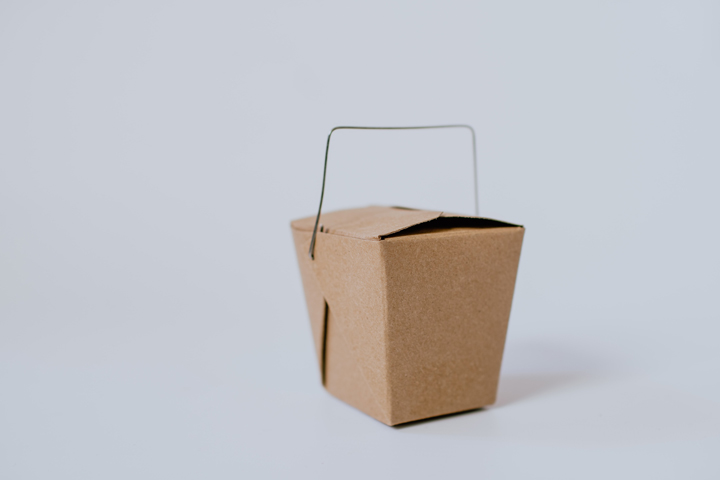In the past year, ghost or cloud kitchens have risen here and around the world as an effort to connect food businesses to much needed customers.
READ ALSO: Summer Cravings: Five Of Our Favorite Burgers
Without a doubt, one of the sectors that suffered that biggest losses in the midst of this pandemic we’re still living through is the dining industry. From fine dining operations within posh hotels to storied favorites such as Chocolate Kiss, many found themselves closing shop due to bourgeoning overhead costs and the lack of dine-in business. Those who choose to fight on have turned to digital means to reach their customers, a necessary evolution that led to the rise of cloud kitchens.
Digital hub
Also called ghost kitchens, this is by no means a new business model with NBC New York first using the term in 2015 to refer to delivery-only setups. While that first mention was done under a negative light, painting a bad picture on restaurants that are not registered, the idea never went away. Many food businesses, especially those that cannot support a dine-in structure, latched on to it—particularly in the past two years.
“There is a big difference in terms of overall operating costs between a brick and mortar store as compared to operating in a cloud kitchen,” explains Grab Philippines’ Josephine Kamiyama of the benefits of this model. “To operate a stand-alone restaurant, regardless of the size, you will have to make provisions for the high cost of rent, and you need to have ample resources for regular maintenance of your store. Add to that the expenses in hiring a full kitchen and waiting crew.”
Kamiyama is project lead in the country for Grab Kitchen, the regional superapp’s own one-stop center. It’s been operating in the Philippines since 2019, although Grab has launched it in its other hubs prior. She says that the set-up cost and the kitchen’s regular maintenance is shouldered by Grab, which are financial burdens that merchants would be happy to take off.
There are four GrabKitchen branches in the country—Glorietta 2, Sampaloc, Malate, and Paranaque—they may open new branches if they see opportunities to do so.
Regional rise
Cloud Kitchens continue to gain traction all over the world. Our neighbor Indonesia, the biggest food-delivery market in Southeast Asia, has 48 Grab Kitchens currently in operation. That number that is not far behind that of startups like Hangry, which has 40. Meanwhile, in Singapore, five cloud kitchens have opened in the past six months alone.
Many major publications in the US report how ghost kitchens are possible reshaping its dining economy. In a September 2020 Los Angeles Times piece, Matt Newberg, who founded the media and event platform HNGRY, describe the idea of a ghost kitchen “is really a paradox because of course you can’t scale kitchen space the way Amazon scales servers, but that’s the way [tech companies] are approaching it.”
Perhaps one of the biggest and notorious names in business that is attached to the concept of ghost kitchens is Travis Kalanick. The former Uber head honcho shifted his focus to his City Storage Systems after being ceremoniously being kicked out in 2017 of the ride-sharing company he co-founded. His new venture has apparently spent around $130 million to purchase around 40 properties.
(A side note: Business Insider reported last month that Kalanick’s company lost about 300 of its employees because of the same tense corporate environment that got him in trouble at Uber in the first place. He apparently didn’t learn his lesson. There is also some push back by local government units and communities who complain that his ghost kitchens are going against city ordinances.)
Helping out
Apart from Grab, the Philippines has seen cloud kitchen startups (such as Kraver’s Kitchen) pop up as well as traditionally in-person setups turn ghost (as is the case with the Mercato Cloud Kitchen).
Without foot traffic, expanding reach becomes an important tactic for small to medium food enterprises. Kamiyama shares a story of a one of their merchants, the Las Piñas-based HappiLee, who got a boost from joining their GrabKitchen in Sampaloc.
“Happilee was able to tap into a new customer base without heavy upfront capital. After only one week, they doubled their GF sales due to heightened visibility on the platform through GrabKitchen,” she says. In its third week, Kamiyama adds, the merchant’s gross merchandise value tripled and its performance has been stable up to this day.
Operating in a cloud kitchen, Kamiyama continues, also allows their partner merchants to experiment and create a menu that will work for their geographical location.
“The advantage of a delivery-only kitchen is that you don’t have to renovate your space to reflect your F&B brand. This gives merchants the flexibility to test new F&B concepts, without substantial upfront investments,” she says. “If a brand or concept doesn’t work, you can quickly pivot and launch a new brand digitally without having to tear down restaurant decoration, etc.”
This also means, Kamiyama points out, that a merchant can operate multiple brands out of the GrabKitchen. “We work with partnering brands to test new menu items, virtual brands and marketing campaigns based on our app data,” she says. “It can be as simple as creating special bundles to encourage greater brand trials.”

But are all these enough to save a fledgling food sector? Only time, the pandemic’s move, and the government’s plans can definitively tell. What’s for sure is that it is action nonetheless, and a step forward.





